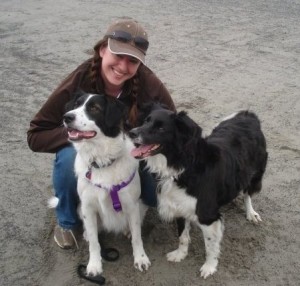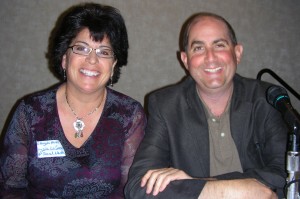 A few weeks ago, I participated in a social media webinar that unfortunately went “over the heads” of most of the other attendees. So I invited many of them to contact me for answers to some of their basic questions.
A few weeks ago, I participated in a social media webinar that unfortunately went “over the heads” of most of the other attendees. So I invited many of them to contact me for answers to some of their basic questions.
Bob asked me:
“What do Newbies typically do wrong?”
Putting on my Thinking Cap, I came up with a Top Ten list.
- If you have not yet DIVED IN, then you can possibly avoid some of these errors.
- If you’ve “only just begun,” maybe you’ll get a better understanding of why you’re not yet Getting It.
- If you’re more experienced, please comment and add your own thoughts on how to help Newbies make their way more successfully down Social Media Revolutionary Road.
Top Ten challenges for newcomers to social media:
1. Trying to do too much too soon:
My suggestion to “students” — no matter what their age or discipline — is to understand that the learning process follows these four-steps: CONFUSION → SILENCE → FOCUS → EFFORT: In brief, anyone learning something new is going to be Confused, so accept it and Silence the associated fears, so that you can Focus on ONE THING [e.g., Facebook, Twitter, LinkedIn] at a time and put in the effort to learn it and use it.
My brother Chuck was quite overwhelmed by the whole social media landscape, but he was intrigued enough to get started. He took my advice, focused solely on LinkedIn and has built up quite a presence in a very short time.
2. Being close-minded and judgmental before you really know what’s what:
I’ll never forget last January when a friend told me she was spending 3 hours a day on Facebook, and I actually told her she was “wasting her life”
— OOOPS.
When I first was introduced to Twitter, I thought that’s “stupid”
— OOOPS.
Now some of my friends invite me to play Mafia Wars . . . hmmmm, what do I say until I know what the game is really all about?
Actually some people I respect actually play Mafia Wars, which means that some of my community members are “there,” which in turn means I need to know what it’s all about.
3. Not listening enough at first to understand the workings and sentiments of a community:
If you are reading any articles on Getting Started with social media, you are bound to see the advice on Listening as a Vital First Step. Some refer to Listening as “Conversation Mining.” But, as we all know, “Listening” is more than mere “Hearing”; not only do many people read over this suggestion, but they may never have developed good listening skills.
For a bit more insight into the importance of Listening, check out my two previous articles;
Listening is the first rule to business success
When communication adds up to a big fat zero
4. Not jumping in and getting going:
Listening is critical, but if you don’t get started, you have nothing to listen to. Learning social media is all about experimenting and taking risks. One webinar coach suggested that we “Ask for forgiveness, rather than permission.” A colleague somewhat skeptical of social media evangelists isn’t a proponent of this advice.
I’m somewhere in between, but you do have to get in there and try things out. Most social media community members are very supportive of Newbies. If some are not, well they are definitely in the minority. Just say you are sorry and move on.
5. Expecting IMMEDIATE Results:
This is particularly troublesome to me because it shows that the social media neophyte doesn’t understand that Relationship-Building is a process that takes time, patience, persistence, and passion.
6. Hiding:
Best Practice on social media is all about being Real, Authentic, Genuine, and Transparent. The first thing Newbies need to understand is that they need to be themselves if they are to find real success on social media platforms. This begins with a recognizable photo and not a default avatar. It continues with completing full profiles on any site they will be fully engaging on.
Stick around for #10 for the rest of this answer.
7. No time management or consistency:
My experience with beginners to social media — and any of the skill-building courses I’ve taught — is that with no practice of what they’ve learned, those early lessons are soon lost. Same goes for further down the road: You MUST make time to be successful. Yes, practice does make perfect [or close to, anyway].
And once you begin a blog, a Twitter account, a Facebook presence, etc., you need to post on a regular basis or you may lose the community members you have been able to gather.
8. Snake oil salesman:
Do not SPAM. Do not sell, sell, sell. Your intention may be to use social media to market your products and services, but Social Media Marketing is a different animal, and that animal is not a snake. It is all about building relationships, so that people in your communities will come to know you and trust you and then come to you for whatever it is you have to offer.
In her great new social media book The New Community Rules: Marketing on the Social Web, Tamar Weinberg quotes new media marketer Chris Heurer:
“If you are trying to sell something to the community, and that is your reason for being there, it will be obvious to those people and you will never be as successful as you can be.
If you are participating because you really want to contribute to the community, because you really want to share what you know, because you really want to be of service to the community and its members, you will sell to the right people BECAUSE of your sincerity and honesty.”
9. Negativity:
I advocate positive participation wherever and whenever you can on the Internet. Think twice or thrice before tearing into people on the Web. Once those words are out there, you cannot take them back — ever.
This is a good spot to put in a good word for good etiquette, so I direct you to my article “Do we need an Emily Post for Social Media?“
FINAL PIECE OF ADVICE . . . and I’m going to make this one a DO, not a Do NOT:
10. Goal of your online presence:
Position yourself as the GO-TO Source for information in your area of expertise.
Therefore, everything you post on the Internet, in whatever platform or tool you choose, should reinforce you as a Thought Leader and Influencer.
Throw your Hat in the Ring:
Just don’t stay on the fringes.
Join the conversation . . . and add your questions and comments.
 Lyndi Thompson is an M&M peanut-aholic and treehugger-wannabe, but she has also taken her nerdy HTML and CSS skills into the Blogosphere with her new blog lyndit.com.
Lyndi Thompson is an M&M peanut-aholic and treehugger-wannabe, but she has also taken her nerdy HTML and CSS skills into the Blogosphere with her new blog lyndit.com. Lyndit: For the past year, I had had the pleasure of getting my feet wet working with MazdasNW.com, a WordPress site on which I wrote blog posts and created banners for events. I really fell in love with the seemingly endless options that the WordPress community had created.
Lyndit: For the past year, I had had the pleasure of getting my feet wet working with MazdasNW.com, a WordPress site on which I wrote blog posts and created banners for events. I really fell in love with the seemingly endless options that the WordPress community had created. Lyndit lives out “in the sticks” in Washington State. She is the proud owner of two border collies, a cat, a guinea pig, a dwarf rabbit, a horse, and a donkey. And even though she’s never lived outside the state, you’ll find her globally on Twitter @lyndit and lyndit.com
Lyndit lives out “in the sticks” in Washington State. She is the proud owner of two border collies, a cat, a guinea pig, a dwarf rabbit, a horse, and a donkey. And even though she’s never lived outside the state, you’ll find her globally on Twitter @lyndit and lyndit.com







